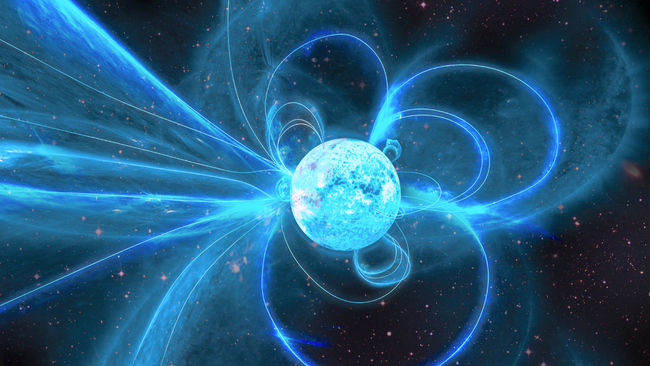Scientists observe how a “dead” neutron star is suddenly reborn
Scientists have witnessed how the «dead» A neutron star with one of the most powerful magnetic fields suddenly came to life. The reactivation of this magnetar is inconsistent with the current understanding of these exotic objects.
The team made the discovery when scientists noticed strange radio signals from the closest known magnetar to Earth, XTE J1810-197, located about 8,000 light-years from Earth, using the Parkes radio telescope.
It is known that most magnetars emit polarized light, with waves oriented in one direction. The team's results show that XTE J1810-197's emission is circularly polarized and appears to spiral as it moves through space.
Magnetars are born after massive stars run out of nuclear fuel and their cores collapse to form neutron stars. These neutron stars are characterized by powerful magnetic fields that are a quadrillion times stronger than the magnetic fields of the Sun. Because of this property, astrophysicists have identified these neutron stars as a separate category — magnetaram.
Detection of radio wave pulses from magnetars — a rare occurrence, and XTE J1810-197 is one of the few magnetars to produce them. This magnetar emitted radio signals in 2003, after which it remained “silent” for more than ten years.
In 2018, XTE J1810-197 was again discovered emitting radio waves using the Lovell Radio Telescope. Since then, it has been observed using the Australian Murriyang telescope.
Although the observation of this phenomenon raises many questions, scientists suspect that the magnetar's unusual emission may be due to superheated plasma above its magnetic pole, which acts as a polarizing filter. However, the specific mechanisms of this process require further study.
The
64-meter Murriyang telescope is equipped with an ultra-wideband receiver that has the highest sensitivity to changes in a wide range of radio frequencies. This allows precise measurements of many objects, including magnetars.
Researchers hope that continued observations of XTE J1810-197 will help further our understanding of various extreme and unusual magnetar-related phenomena.

